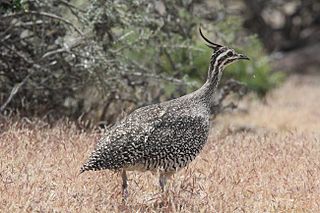
Tinamous are members of the order Tinamiformes, and family Tinamidae, divided into two distinct subfamilies, containing 46 species found in Mexico, Central America, and South America. The word "tinamou" comes from the Galibi term for these birds, tinamu. Tinamous are the only living group of palaeognaths able to fly, and were traditionally regarded as the sister group of the flightless ratites, but recent work places them well within the ratite radiation as most closely related to the extinct moa of New Zealand, implying flightlessness emerged among ratites multiple times. Tinamous first appear in the fossil record in the Miocene epoch. They are generally sedentary, ground-dwelling and, though not flightless, when possible avoid flight in favour of hiding or running away from danger. They are found in a variety of habitats, ranging from semi-arid alpine grasslands to tropical rainforests. The two subfamilies are broadly divided by habitat, with the Nothurinae referred to as steppe or open country tinamous, and the Tinaminae known as forest tinamous.
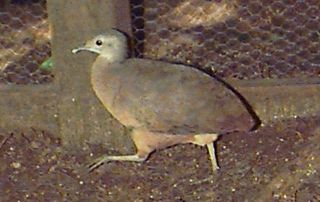
The little tinamou is a species of tinamou. It is found in Central and South America, as well as on the Caribbean island of Trinidad.

The brown tinamou is a brownish ground bird found in humid lowland and montane forest in tropical and subtropical South America.
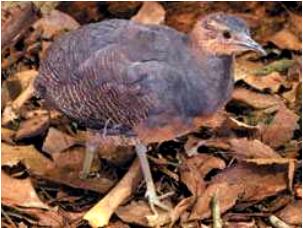
The yellow-legged tinamou is a species of tinamou found in wooded and shrubby habitats in tropical and subtropical eastern Brazil. This superficially quail-like bird has a grey-brown plumage and two easily separated subspecies. It has declined due to human activities, and is therefore listed as Near Threatened by the IUCN.

Crypturellus is a genus of tinamous containing mostly forest species. However, there are the odd few that are grassland or steppe tinamous. The genus contains 21 species.

The red-legged tinamou or red-footed tinamou, is a ground-dwelling bird found in the tropics and lower subtropics of northern South America.

Berlepsch's tinamou is a type of ground bird found in moist forest in northwestern Colombia and northwestern Ecuador.

The pale-browed tinamou is a type of tinamou found in tropical dry forests in Peru and Ecuador.
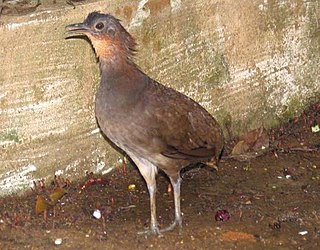
The Brazilian tinamou is a type of tinamou found in tropical moist lowland forest in regions of Amazonian South America.

The grey-legged tinamou, alternatively, the gray-legged tinamou, is a small ground-dwelling bird endemic to the neotropics. It is a rarely seen bird due to its small size and discreet appearance.
The Colombian tinamou, Crypturellus erythropus columbianus, is a tinamou found in Córdoba, Sucre, Bolívar, and Antioquia in north-central Colombia. Little is known about it. It occurs in lowland moist forest and shrubland at elevation up to 600 m (2,000 ft).

The black-capped tinamou is a type of tinamou commonly found in the moist forest lowlands in subtropical and tropical regions.

The thicket tinamou or rufescent tinamou is a type of tinamou commonly found in moist forests in subtropical and tropical central Mexico.

The slaty-breasted tinamou or Boucard's tinamou is a type of tinamou commonly found in lowland moist forests of Mexico and Central America.

The Choco tinamou or Chocó tinamou is a type of tinamou found in lowland forest and montane forest in subtropical and tropical regions of Colombia and Panama.

The barred tinamou is a type of tinamou commonly found in lowland moist forest in subtropical and tropical regions of northern South America.

The Tataupa tinamou is a type of tinamou commonly found in dry forest in subtropical and tropical regions in southeastern South America.
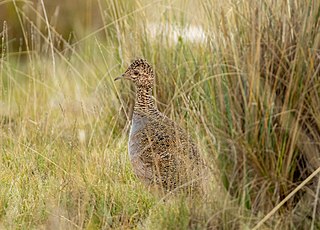
The ornate tinamou is a type of tinamou commonly found in the high altitude grassland and dry shrubland in subtropical and tropical regions of west central South America.
The Santa Marta tinamou, Crypturellus erythropus idoneus, is a subspecies of tinamou that was recognized as a species by most authorities until 2006. It is found in northern South America.















